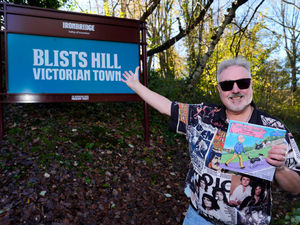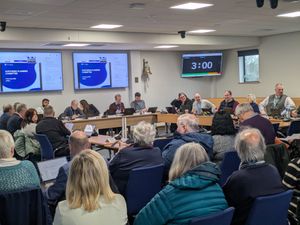The Cannock Chase rock that rolled
For five local lads, talk that one of Cannock Chase's unusual landmarks was "immovable" amounted to a challenge.
So armed with a spade and two jacks, they put the matter to the test.
It moved all right. The fivesome unstuck the glacial boulder from its hilltop perch and then rolled it all the way to the foot of the hill. It took them four hours.
That was back in May 1958, and was not the first indignity suffered by the large boulder which had taken a ride on a glacier to Staffordshire all the way from the Lake District during the Ice Age.
Their midnight escapade ended up in court, where they were fined for damaging the concrete base on which the boulder, mounted on top of Spring Hill, near Milford, had stood.
“We only did it because it was a challenge and they said it could not be moved," one of them said.
The story of the boulder has been researched by Richard Pursehouse, of Cannock, and Ben Cunliffe, of Stafford.
They say that it was first discovered during the Second World War in a gravel pit in Milford and in 1949 the Friends of Cannock Chase managed to haul it to the top of Pudding Hill, near Milford.
Cannock Chase has boulders and rocks that have no right to be there, and are what are called "erratics," transported southwards by the spreading ice sheet during the Ice Age, and then being left behind when the ice retreated again.
The pair say the boulder was pushed off Pudding Hill in 1949 but, undeterred, the Friends managed to haul it to the top of Spring Hill on November 14, 1954, only for it to be dislodged again in the 1958 incident.
Two years later a compass incorporating a sundial and showing landmarks within a 60 miles radius was placed on the boulder. In June 1961 the compass was taken, but was recovered by police in February 1962.
Presumably because hilltop sites were too much of a temptation, at some point the boulder was set in its current location, on the concrete base of a long-disappeared Great War water tower at Brocton, part of a system to supply the Brocton and Rugeley military camps on Cannock Chase.
Richard and Ben say that after the Great War, the two steel tanks from Rugeley camp were re-erected at Sedgley Beacon, with the height increased by 20ft.
"The Sedgley tanks provided water for the town for over half a century and were finally dismantled in March 1974."
As for the boulder, it is a popular rendezvous spot for organised walks.





